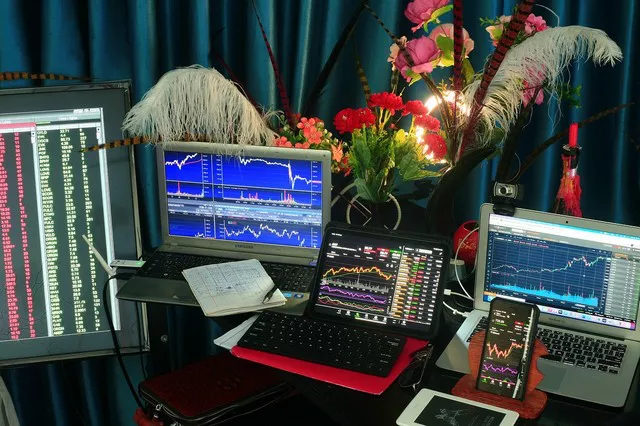In the world of finance, Eurodollar futures stand as a significant derivative instrument, playing a crucial role in global financial markets. Despite the name, Eurodollar futures have no direct connection to the European currency; rather, they are intricately linked to the U.S. dollar and the interest rate landscape.
Understanding Eurodollar Futures
Eurodollar futures are financial derivatives traded on the Chicago Mercantile Exchange (CME) that derive their name from the fact that they are settled in U.S. dollars but are held outside the United States. These futures contracts allow market participants to speculate on or hedge against future interest rate movements. Specifically, Eurodollar futures are tied to the London Interbank Offered Rate (LIBOR), which represents the interest rate at which international banks lend to one another in the Eurodollar market.
Origins of Eurodollar Futures
The roots of Eurodollar futures can be traced back to the post-World War II era when U.S. dollars held by foreign banks in European financial institutions began to circulate as a means of international trade and finance. As these U.S. dollar deposits grew, the need for a standardized financial instrument to hedge against interest rate fluctuations emerged. This led to the development of Eurodollar futures contracts, which allowed market participants to manage their exposure to fluctuations in short-term U.S. interest rates.
Mechanics of Eurodollar Futures
Eurodollar futures contracts are standardized in terms of contract size, expiration dates, and underlying interest rates. Here’s an overview of their mechanics:
Contract Size: Each Eurodollar futures contract represents a $1 million face value of a three-month U.S. dollar time deposit. In other words, it mirrors the interest rate on a $1 million, three-month Eurodollar deposit.
Expiration Dates: Eurodollar futures contracts have various expiration dates, typically falling in quarterly cycles. These dates correspond to the last day on which trading can occur for that specific contract.
Pricing and Quotation: Eurodollar futures prices are quoted as 100 minus the annualized interest rate. For example, if the Eurodollar futures price is 98.50, it implies an annualized interest rate of 1.50%.
Contract Months: Eurodollar futures have multiple contract months, allowing traders to choose contracts with different expiration dates to suit their hedging or speculation needs.
Applications of Eurodollar Futures
Eurodollar futures serve various purposes in the financial landscape:
Interest Rate Hedging: One of the primary applications of Eurodollar futures is interest rate hedging. Businesses, financial institutions, and investors use these contracts to protect themselves against adverse movements in interest rates. For example, a company with floating-rate debt may use Eurodollar futures to hedge against rising interest rates.
Speculation: Traders engage in Eurodollar futures to speculate on the direction of short-term interest rates. Depending on their outlook, they can take long (buy) or short (sell) positions in these contracts.
Interest Rate Forecasting: The Eurodollar futures curve, which displays the prices of contracts with different expiration dates, can offer insights into market expectations regarding future interest rates. Analysts and economists often analyze this curve to make interest rate forecasts.
Portfolio Diversification: Investors can use Eurodollar futures to diversify their portfolios and gain exposure to interest rate movements, which can be uncorrelated with other asset classes.
The Role of LIBOR in Eurodollar Futures
The London Interbank Offered Rate (LIBOR) plays a central role in the pricing and settlement of Eurodollar futures contracts. LIBOR represents the interest rate at which major banks in the London interbank market are willing to lend to one another. As such, it is a key benchmark for short-term interest rates in the global financial system.
Eurodollar futures contracts are tied to LIBOR because they are essentially bets on the future level of this benchmark rate. When interest rates rise, Eurodollar futures prices fall, and vice versa. Therefore, changes in LIBOR directly impact the value of Eurodollar futures contracts.
Transition from LIBOR to SOFR
It’s essential to note that the landscape of interest rate benchmarks is undergoing a significant transition. Regulators and market participants are working to phase out LIBOR due to concerns about its reliability and susceptibility to manipulation. The Alternative Reference Rates Committee (ARRC) in the United States has introduced the Secured Overnight Financing Rate (SOFR) as a replacement for LIBOR.
This transition will have implications for Eurodollar futures, as the contracts are currently tied to LIBOR. Market participants will need to monitor developments closely and potentially adjust their strategies as the industry shifts toward alternative reference rates like SOFR.
Conclusion
Eurodollar futures have played a pivotal role in the world of finance since their inception, providing a means for market participants to manage interest rate risk and speculate on short-term interest rate movements. Their link to LIBOR, the benchmark for global short-term interest rates, has made them a valuable tool for traders, investors, and businesses alike.
As the financial industry undergoes a transition away from LIBOR to alternative reference rates like SOFR, it will be essential for market participants to stay informed about these changes and adapt their strategies accordingly. Eurodollar futures will likely continue to be a vital instrument in the evolving landscape of interest rate risk management and speculation.


